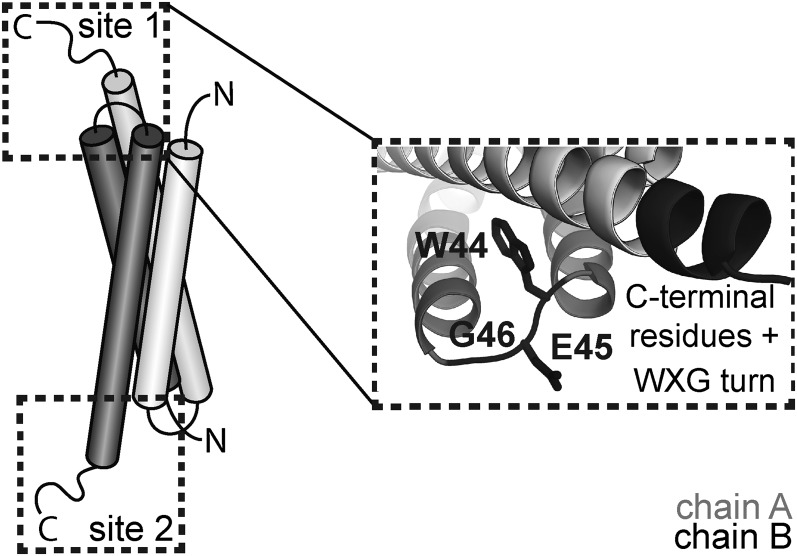Fig. 7.
WXG substrate composite recognition signal model. Wild-type YukE contains two equivalent recognition sites located on each end of the elongated dimer consisting of four α-helices. The WXG loop of one subunit and the C-terminal residues of the second subunit constitute the bipartite recognition signal. One intact composite recognition site is sufficient for secretion of the complexed, folded substrate.

